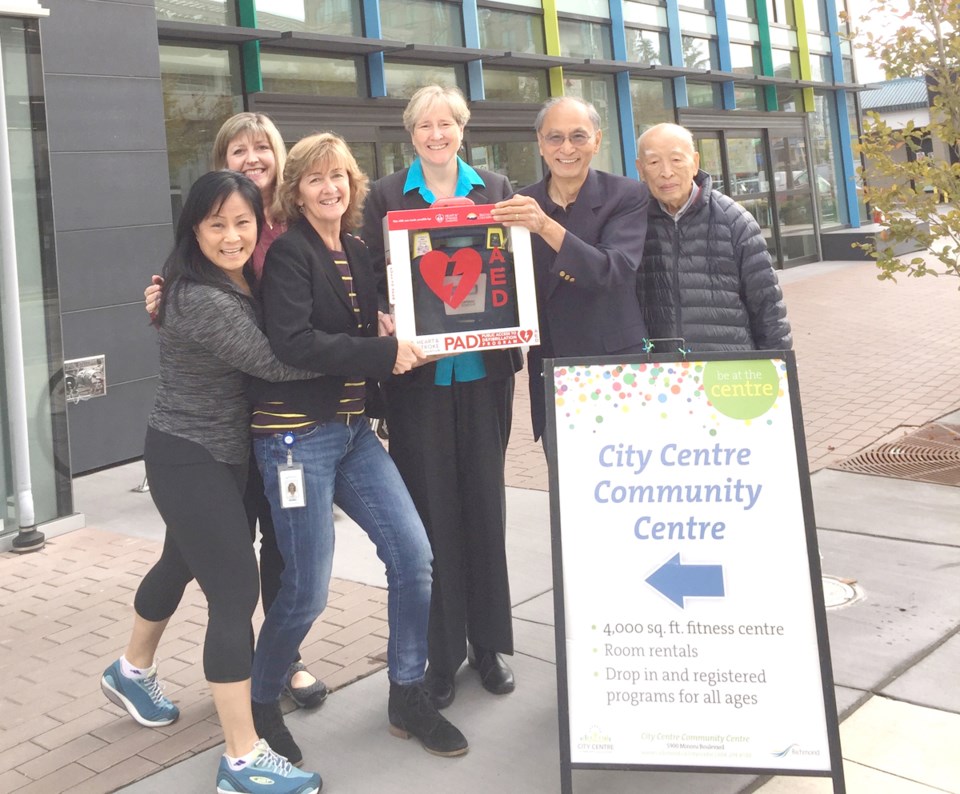After raising the most money across the coastal Vancouver area in this year’s Heart and Stroke Big Bike event, the Richmond Wellness Club, as a reward, got to place an automated external defibrillator (AED) in the community location of its choice.
And, given its central location and high foot traffic, the club opted for the relatively new City Centre Community Centre (C4) on Minoru Boulevard.
The club received the honour from the Heart and Stroke Foundation after raising an impressive $12,241 for the Big Bike ride earlier this year.
As a result of the AED being installed, C4 staff will receive orientation and training on how to use the machine.
“…to be able to make this life-saving equipment available in our community, as a result of our hard work — that’s really special,” said Tim To, vice president of Richmond Wellness Club.
For 24 years, the club has participated in the Big Bike event, raising more than $130,000 to support life-saving research and programs.
“The Richmond Wellness Club has been an incredible supporter of the lifesaving work of the Heart and Stroke Foundation,” said Joan Mann, area manager for the foundation.
“Their commitment and generosity over 24 years is remarkable, and it is so fitting that they are getting this local recognition for their efforts, and in a way that will help to save lives close to home.”
Cardiac arrest strikes suddenly and affects people of all ages, with B.C.’s emergency services attending between 2,400 and 2,800 cardiac arrest calls each year.
Without immediate help, someone in cardiac arrest could suffer brain damage within three minutes and after 12 minutes, survival is unlikely.
AEDs are small, portable devices that deliver an electrical shock to the heart to allow it to get back into a normal rhythm after a cardiac arrest. They can be used quickly and safely by the general public before emergency services arrive. AED use combined with CPR in the first few minutes of a cardiac arrest can double the chance of survival.



